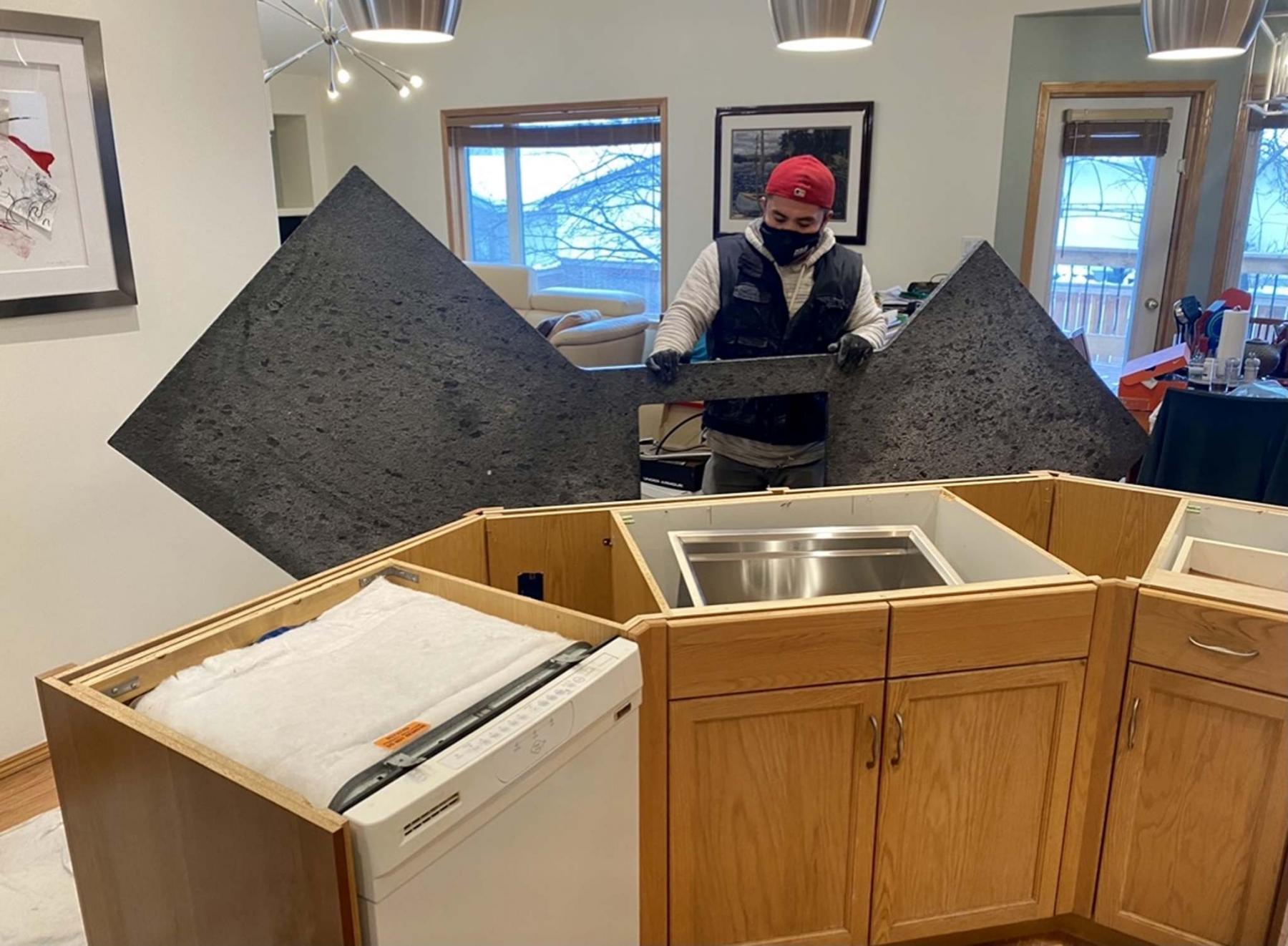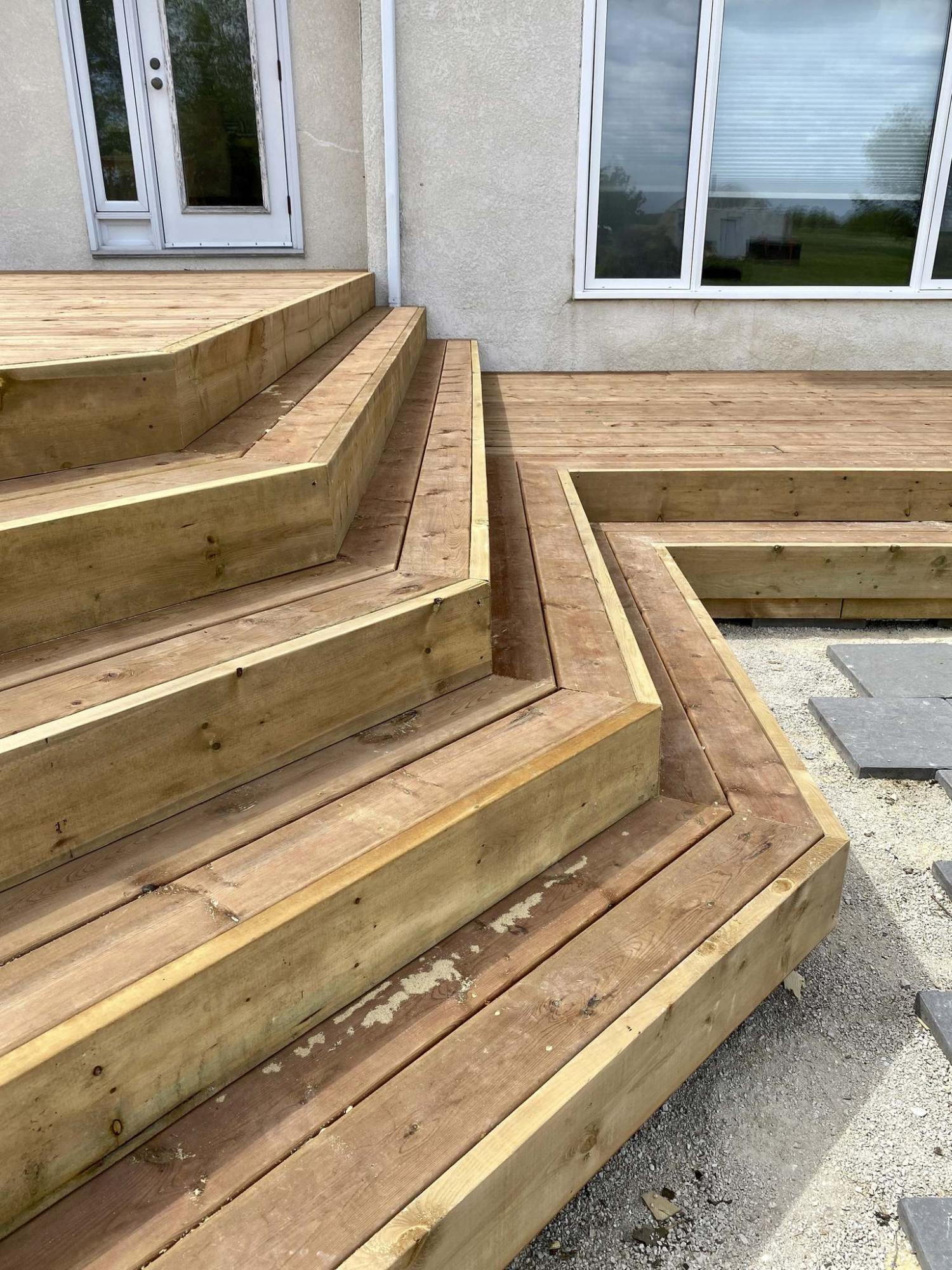Renovation & Design
Renovation & Design
Helpful hints to cruise through summer
Run ceiling fans counterclockwise in the summer to optimize energy use. Switch to the opposite direction in the winter. — Bob
Apply toothpaste to stop itches caused by mosquitoes. Maybe this will be the year of no mosquitoes? — Verna
If you do not own an air-conditioner, hang a bed sheet over an open window and spray it with water. The result is evaporative cooling and very helpful during hot summer days. — Bob
Chew peppermint gum to reduce the chance of car sickness. — Alanda
Sprinkle coffee grounds outside near doorways. Coffee’s high nitrogen detracts bugs, so they won’t walk across it and into your home. — Alanda
Add bathtub appliques to the bottom of kiddie pools to add grip to the bottom of the pool. — David
As a way to decorate for an outdoor party and keep drinks cool, I fill balloons half full of water. Freeze the balloons and add them to a bucket to keep drinks cool. — Sandra
For tender meat, add salt about 30 minutes before grilling. — Chef John
Fill clean spray bottles with cooled green tea. Chill in the fridge, and spray on yourself for refreshing, body cooling relief. — Sandra
To hull strawberries, use a straw. Hold the strawberry stem-side down and poke a straw into the bottom of the berry. Push it all the way through until the stem pops out the other side. — Marc
After a day at the beach, sprinkle baby powder over arms and legs. Sand will brush off easily, making cleanup quick. — Alanda
Clean the grill with foil, scrunch up some foil to about the size of a golf ball. Using tongs, scrape the foil ball over the hot grates to remove all the charred bits and greasy grime. Once you’re finished, brush the grill with oil so it’s ready to go for next time. — Denise
Stick a mini thermometer to the inside of your cooler, this can help you gauge how warm your food’s getting — and when you’re better off tossing it, for safety reasons. — Oliver
When barbecuing always pat your meat dry on both sides with a paper towel before grilling. Wet meat won’t sear. — Chef John
Make your trampoline safer by cutting up a pool noodle and covering the springs of the trampoline with sections of pool noodle. — Elaine
Note: Every user assumes all risks of injury or damage resulting from the implementation of any suggestions in this column. Test all products on an inconspicuous area first.
Have a great suggestion or tip? Please send an email at: info@reena.ca. Reena Nerbas is a popular motivational presenter for large and small groups; check out her website: reena.ca.
Renovation & Design
Hardware cloth a good way to keep rodents at bay
Question: What type of screening would you recommend for a screened porch, with no glass, to keep out squirrels? This is for a cottage at the lake where the squirrels chewed a hole in the metal screen and then proceeded to try and invade the cottage, itself. Fortunately, we caught it early on and were able to oust the persistent critter.
We are now looking for ways to prevent another such incident.
Thanks in advance for your help.
Shirley Bestvater.
Answer: Installation of more rigid metal materials may be the only way to prevent squirrels, and other pests, from entering your cottage through your screen porch, while you are not there. Unfortunately, these will alter the look of your bug-screen only room, and may not be to your satisfaction, aesthetically. In that case, the solution may be to ensure the screens are in perfect condition and immediately replace any that are in any way deteriorated.
Keeping pests out of your summer home can be a challenge, especially when you are not there to observe these potential invaders at all times. While tree and ground squirrels may be some of the most bothersome, they are not the only naturally occurring creatures that we have to contend with. The reason you have screens on this room, in the first place, is primarily to prevent insects from entering your living space.
Most annoying may be mosquitos, which can be quite pervasive in lake country due to large areas perfect for breeding in the hot, humid summer conditions. Aside from preventing accumulations of standing water near your property, which can be excellent breeding sites, there is not much that can be done to stop mosquitos. So, the next best option is to prevent their easy entry into your domicile. The best method for this is to ensure there are no openings in the building enclosure that will easily allow them to fly in. Because we want as much open space as possible, and to ensure adequate ventilation for natural cooling, we often have large open porches, decks, or verandahs. Especially after dusk, these open areas are a magnet for mosquitoes and other flying insects, so we often screen in these locations for comfort.
Because of the large areas of screened sections of a typical porch or verandah, it may be difficult to install rigid and durable enough screens to prevent damage. Tree limbs and debris, rain, snow, and even mechanical damage from pets and human occupants can weaken these screened windows. Once weakened, they may be more susceptible to entry by rodents and other critters with sharp claws and teeth. The best method to prevent this, especially when the cottage is not occupied, is to install large windows. These could be proper ones with sealed units, or single-pane storm windows, but should have glass fully enclosing the openings when not in use. When closed, these will ensure that no small pests enter the building by damaging the screens, but will also prevent deterioration inside the porch due to precipitation. The two negative aspects of this are loss of some ventilation and the obvious cost.
If full windows are not in the cards, and you desire to maintain the screen-only aspect of your porch, installation of new metal mesh will be a must. Often, pests gain entry through screens that are partially damaged or deteriorated. If you have older screens, they may be corroded, sagging, loose, or otherwise worn out. In that case, it may be very easy for an enterprising squirrel to locate the defect and exploit it. The first item should be to ensure the screens are in top notch condition, or they should be replaced right away with new aluminium screens. These metal screens will be fairly durable and corrosion resistant, as well. If they are properly installed, with limited slack, it may be sufficient to send the local rodent population in search of easier prey.
If you are looking for a more durable alternative, you could add a second layer of metal mesh to the screened sections. The best product I have found for this is often referred to as "hardware cloth". This aluminium mesh has square openings often ranging from around 10 to 25 mm. These are too large to stop insects, but the heavier gauge of this material is ideal for prevention of damage by small mammals. So, the solution is to use this in combination with traditional bug screening, to reinforce a weaker screened window. The downside is that this may dramatically alter the aesthetics of the room, to the point where it may be difficult to easily see through to the exterior. This may partially defeat the purpose of the screens, and may not be an acceptable option, even though it will stop the squirrel intrusion.
Installation of addition reinforcing material inside your existing screen windows may be one way to prevent future damage and entry from local rodents, but may look bad enough to search for alternatives. The simplest defence may be to regularly inspect the existing metal screens and rapidly replace any that are showing signs of wear or corrosion, with new aluminium screening, to prevent easy damage by industrious squirrels.
Ari Marantz is the owner of Trained Eye Home Inspection Ltd. and the past president of the Canadian Association of Home & Property Inspectors — Manitoba (cahpi.mb.ca). Questions can be emailed to the address below. Ari can be reached at 204-291-5358 or check out his website at trainedeye.ca.
Renovation & Design
Pet-friendly designs to make your house a home
Animal lovers know your pet is truly your family.
One way to integrate the furry companion into your life is to make your home seamlessly incorporate their needs.
From easy-to-clean sofas to wash stations, the steps you take to create your perfect oasis will also help make your house a home for your pet.
"Just as great design seamlessly melds fashion and function, the best pet-friendly kitchens create stylish, integrated spaces that allow your pets to be part of the family, without adding clutter or creating safety hazards for paws and tails," HouseBeautiful noted.
Of course, you’ll want to take flooring into account, especially if you have a puppy or kitten. Flooring Inc. counts cork, bamboo, laminate, tile and vinyl among the best flooring for pets. These surfaces provide easy cleanup and are mostly scratch-resistant, or they hide nail marks more easily.
But your four-legged friend likely won’t always be on the floor. For those ever-special cuddle sessions, you’ll likely want them to snuggle up next to you on the couch.
In that case, Apartment Therapy advises you skip the velvet, chenille or silk. Instead, stick to fabrics with a tight weave.
"In terms of other fabrics, you can’t go wrong with microfibre or canvas. These materials are made to withstand all sorts of use, and are typically easy to clean and take care of," the website said.
All those belly rubs are bound to work up an appetite, however. When that happens, you’ll want your pet to have a place where they can eat comfortably while not taking away from the esthetics of your home. Feeding stations such as a build-out in the hallway or a buffet-style feeding station tucked into the kitchen island, as shown on Houzz, make for functional designs.
And how about bath time?
One of the most challenging moments for pet owners comes when you have to give them a good cleaning after a romp in the park.
Wash stations in the mudroom or laundry area can provide an easy spot for pet owners to freshen up their furry friends.
"A deep tub that is easy for your pet to access will allow you to keep your dog clean, no matter what it discovers in the backyard. You can even create a built-in crate in this room for your dog, giving it a safe and comfortable space to dry after a nice bath," South Carolina-based Donald A. Gardner Architects said on its blog.
— TNS








